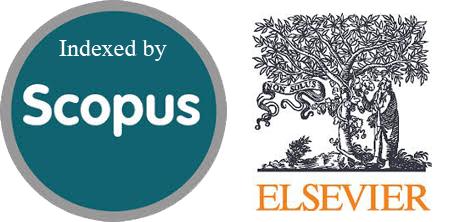Depression Scores before and after Electrocompulsive Therapy with Propofol versus Ketamine Anesthesia: A Prospective Observational Study
DOI:
https://doi.org/10.54133/ajms.v9i1.2063Keywords:
Electrocompulsive therapy, Ketamine, Propofol, Treatment resistant depressionAbstract
Background: Major depressive disorder (MDD) is a severe condition marked by persistent sadness and functional impairment. While electrocompulsive therapy (ECT) is effective for treatment-resistant cases, the comparative effects of propofol and ketamine as anesthetic agents remain unclear. Objective: To compare the effects of propofol and ketamine anesthesia on depression severity in patients undergoing ECT using HDRS scores at multiple time points. Methods: In this prospective observational study, 50 patients with treatment-resistant depression were assigned to receive ECT with either propofol- or ketamine-based anesthesia. Depression severity was measured using HDRS at baseline and 1 week, 1 month, and 3 months post-treatment. Secondary outcomes included relapse rates and additional ECT sessions. Results: Patients receiving ketamine showed significantly greater HDRS reductions at all follow-ups (p<0.05), fewer relapses, and less need for additional ECT sessions compared with those receiving propofol. However, ketamine was associated with higher blood pressure. Conclusions: Ketamine was associated with more robust and sustained improvement in depression scores following ECT than propofol. Further studies are needed to confirm these findings and to investigate other anesthetic options.
Downloads
References
McIntyre RS, Alsuwaidan M, Baune BT, Berk M, Demyttenaere K, Goldberg JF, et al. Treatment-resistant depression: definition, prevalence, detection, management, and investigational interventions. World Psychiatry. 2023;22(3):394–412. doi: 10.1002/wps.21120. DOI: https://doi.org/10.1002/wps.21120
Taylor DM, Barnes TRE, Young AH, (Eds.), The Maudsley Prescribing Guidelines in Psychiatry, (14th Ed.), Hoboken: John Wiley & Sons; 2021. DOI: https://doi.org/10.1002/9781119870203
Ding Z, White PF. Anesthesia for Electroconvulsive Therapy. Anesth Analg. 2002;94(5):1351. doi: 10.1097/00000539-200205000-00057. DOI: https://doi.org/10.1097/00000539-200205000-00057
Diagnostic and statistical manual of mental disorders: DSM-5. 5th ed. Washington: American psychiatric association; 2013.
Krishnan V, Nestler EJ. The molecular neurobiology of depression. Nature. 2008;455(7215):894–902. doi: 10.1038/nature07455. DOI: https://doi.org/10.1038/nature07455
Cowen PJ. Cortisol, serotonin and depression: All stressed out? Br J Psychiatry. 2002;180(2):99–100. doi: 10.1192/bjp.180.2.99. DOI: https://doi.org/10.1192/bjp.180.2.99
Shirayama Y, Chen ACH, Nakagawa S, Russell DS, Duman RS. Brain-derived neurotrophic factor produces antidepressant effects in behavioral models of depression. J Neurosci. 2002;22(8):3251–3261. doi: 10.1523/JNEUROSCI.22-08-03251.2002. DOI: https://doi.org/10.1523/JNEUROSCI.22-08-03251.2002
Watson S, Mackin P. HPA axis function in mood disorders. Psychiatry. 2006;5(5):166–170. doi: 10.1383/psyt.2006.5.5.166. DOI: https://doi.org/10.1383/psyt.2006.5.5.166
Rasmussen KG. Propofol for ECT anesthesia a review of the literature. J ECT. 2014;30(3):210. doi: 10.1097/YCT.0000000000000093. DOI: https://doi.org/10.1097/YCT.0000000000000093
Jankauskas V, Necyk C, Chue J, Chue P. A review of ketamine’s role in ECT and non-ECT settings. Neuropsychiatr Dis Treat. 2018;14:1437–1450. doi: 10.2147/NDT.S157233. DOI: https://doi.org/10.2147/NDT.S157233
Rapid neuroplasticity changes and response to intravenous ketamine: a randomized controlled trial in treatment-resistant depression. Translational Psychiatry. [cited 2025 Jan 14]. Available from: https://www.nature.com/articles/s41398-023-02451-0
Phillips JL, Norris S, Talbot J, Birmingham M, Hatchard T, Ortiz A, et al. Single, repeated, and maintenance ketamine infusions for treatment-resistant depression: A randomized controlled trial. Am J Psychiatry. 2019;176(5):401–409. doi: 10.1176/appi.ajp.2018.18070834. DOI: https://doi.org/10.1176/appi.ajp.2018.18070834
Schwartz J, Murrough JW, Iosifescu DV. Ketamine for treatment-resistant depression: recent developments and clinical applications. Evid Based Ment Health. 2016;19(2):35–38. doi: 10.1136/eb-2016-102355. DOI: https://doi.org/10.1136/eb-2016-102355
Wang X, Chen Y, Zhou X, Liu F, Zhang T, Zhang C. Effects of propofol and ketamine as combined anesthesia for electroconvulsive therapy in patients with depressive disorder. J ECT. 2012;28(2):128–132. doi: 10.1097/YCT.0b013e31824d1d02. DOI: https://doi.org/10.1097/YCT.0b013e31824d1d02
Zarate CA, Singh JB, Carlson PJ, Brutsche NE, Ameli R, Luckenbaugh DA, et al. A randomized trial of an N-methyl-D-aspartate antagonist in treatment-resistant major depression. Arch Gen Psychiatry. 2006;63(8):856–864. doi: 10.1001/archpsyc.63.8.856. DOI: https://doi.org/10.1001/archpsyc.63.8.856
Goforth HW, Holsinger T. Rapid relief of severe major depressive disorder by use of preoperative ketamine and electroconvulsive therapy. J ECT. 2007;23(1):23–25. doi: 10.1097/01.yct.0000263257.44539.23. DOI: https://doi.org/10.1097/01.yct.0000263257.44539.23

Downloads
Published
How to Cite
Issue
Section
License
Copyright (c) 2025 Al-Rafidain Journal of Medical Sciences ( ISSN 2789-3219 )

This work is licensed under a Creative Commons Attribution-NonCommercial-ShareAlike 4.0 International License.
Published by Al-Rafidain University College. This is an open access journal issued under the CC BY-NC-SA 4.0 license (https://creativecommons.org/licenses/by-nc-sa/4.0/).











